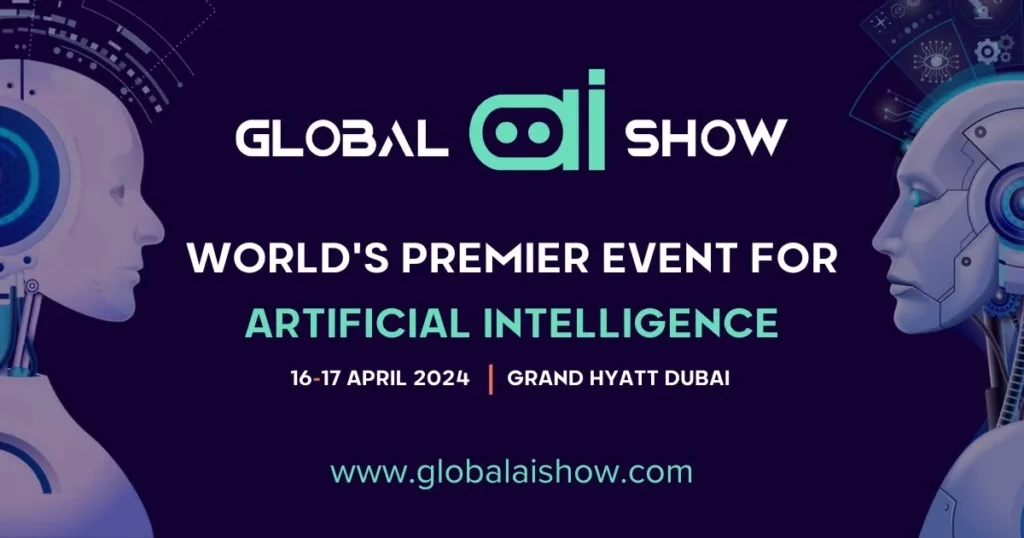DUBAI TO DRIVE HUMAN ENGINEERED INTELLIGENCE & LIFE
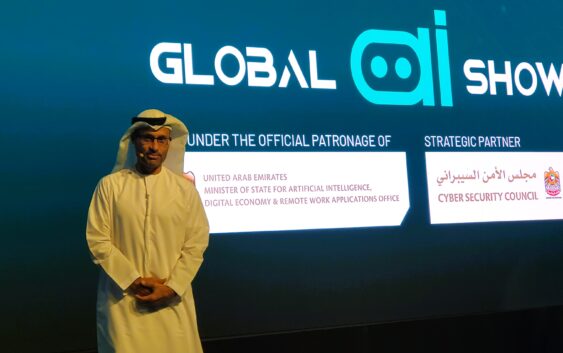
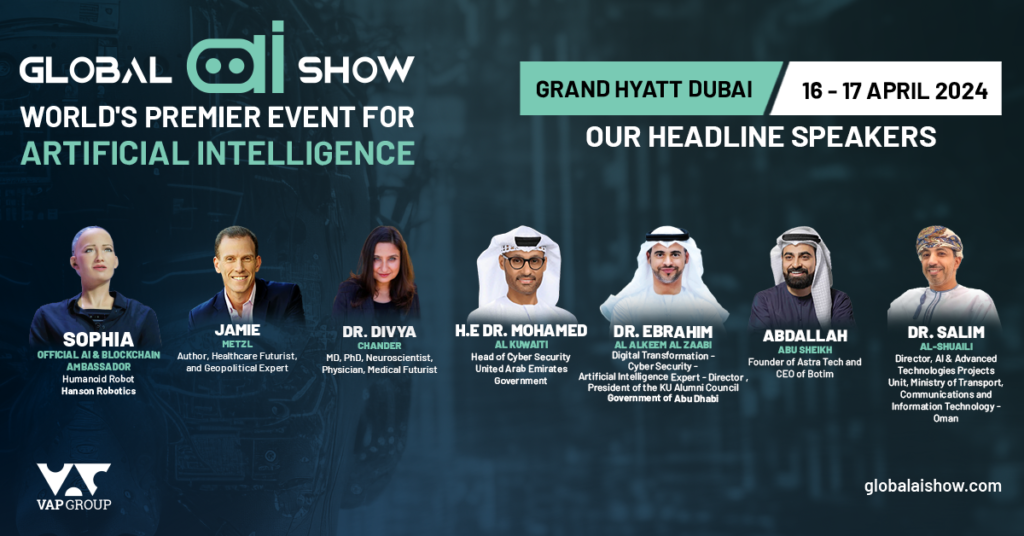
The highly anticipated Global AI Show, organized by VAP Group, a renowned blockchain and AI consultancy company, brought together significant personalities from the Middle East’s AI, ML, and RPA domains on April 16-17, 2024, at the Grand Hyatt Dubai. The exhibition brought together key AI leaders, experts, and enthusiasts from all around the world for a dynamic and engaging experience in the cutting-edge worlds of AI, machine learning, and RPA.
The GCC is embracing AI with strong government support and investment. AI is advancing rapidly across industries. Global AI Show – Dubai connected AI stakeholders, fostering collaboration and knowledge sharing through expert-led sessions on trends and strategies, furthering the region’s tech ambitions.
The Global AI Show in UAE was a major tech event, uniting 7000+ attendees from various sectors. It boosted AI development in areas of national interest. The show featured 300+ speakers discussing real-world AI applications, challenges, and regulations through diverse sessions. Industry expertsl shared insights on AI’s impact in key sectors like airlines, telecom, and finance.
The event was organized by VAP Group, a global leader in AI and blockchain consultancy with over ten years of experience. VAP Group designed this specialized platform for various AI firms. The event was a deep dive into AI, bringing together fresh ideas, information, and opportunities in this rapidly developing technology industry.
The Global AI Show emerged as a powerhouse, bringing together global AI luminaries to explore the technology’s transformative potential. From healthcare to energy, attendees gained a comprehensive understanding of AI’s role in shaping the future. The event featured captivating presentations from industry pioneers, such as Jamie Metzl and Dr. Divya Chander.
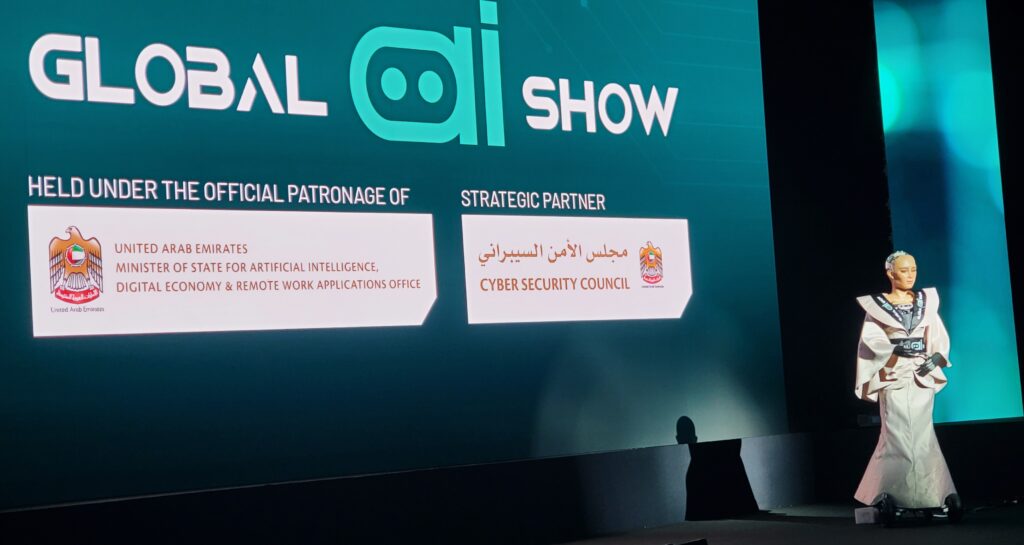
Sophia, Hanson Robotics’ well-known humanoid robot, served as the official AI brand ambassador at the Global AI Show. Hanson Robotics built Sophia, the world’s first robot citizen capable of mimicking social interaction and expressing a variety of emotions. Sophia is a prime example of the wonders of artificial intelligence and robotics, converging technology with humanity. Her presence at the two events seeks to inspire attendees on the limitless possibilities of AI and web3 technologies.
Celebrated for her ‘human-level intelligence,’ Sophia has already travelled to 65 countries and is a citizen of Saudi Arabia. This makes her the first robot in history to have citizenship in a country. She has over 350,000 followers on social media, where she is often applauded for her witty remarks. While her socials are handled by a social media team with an AI dialogue system, the Global AI Show showcased her true spirit in reality. Sophia addressed a crowd of more than 10,000 attendees expected at the event.
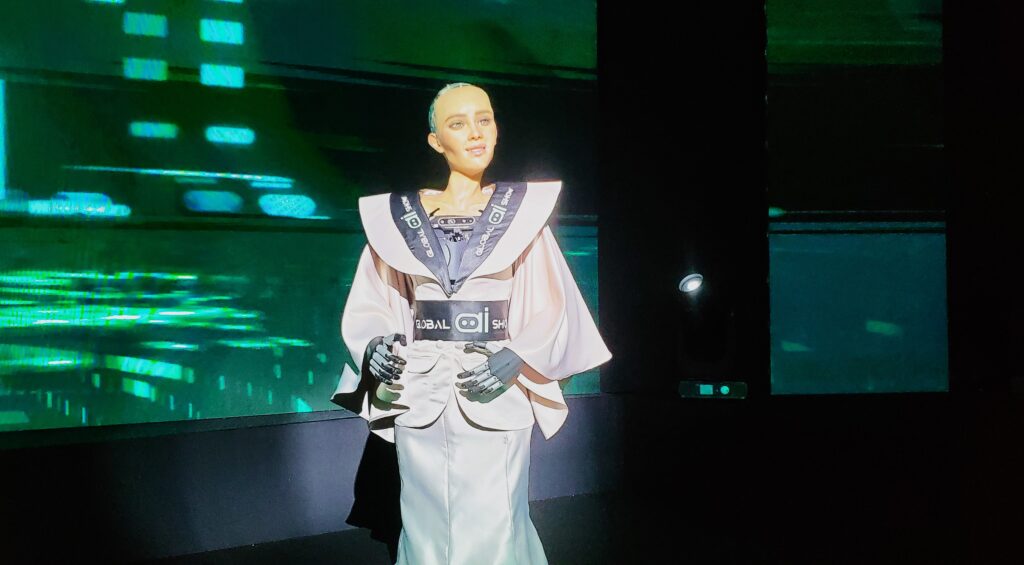
Sophia, Hanson Robotics’ most sophisticated human-like robot, embodies our hopes for the future of AI. Sophia, a unique blend of science, engineering, and creativity, is both a human-created science fiction figure representing the future of AI and robotics and a platform for advanced robotics and AI research. Sophia has captivated the imaginations of people all around the world. She is the world’s first robot citizen and the UNDP’s first robot Innovation Ambassador. Sophia is swiftly becoming a household name, having been on The Tonight Show and Good Morning Britain, as well as presenting at hundreds of conferences throughout the world.
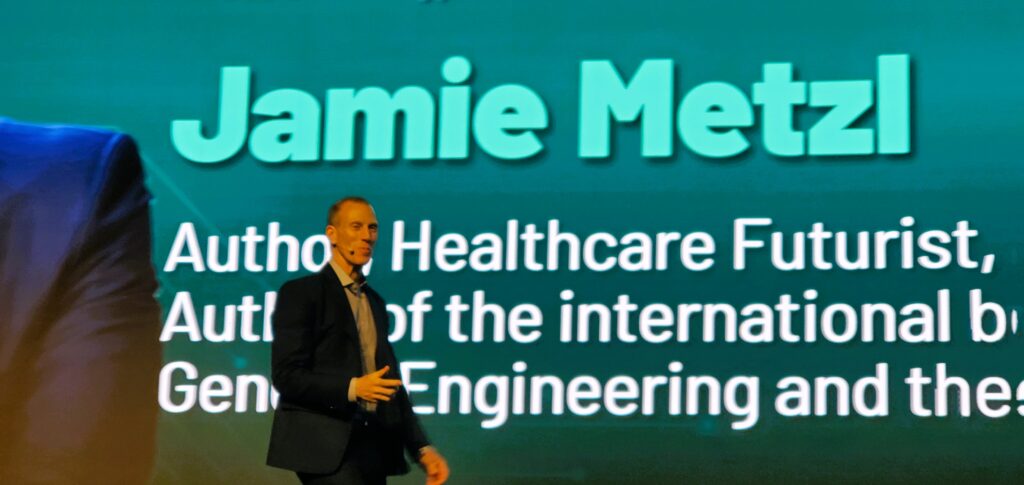
Jamie Metzl, a technology and healthcare futurist, discussed the consequences of the AI, genetic, and biotechnology revolutions. Attendees had their copies of Hacking Darwin: Genetic Engineering and the Future of Humanity autographed, as well as gained rare insights into Metzl’s upcoming book, Superconvergence: How the Genetics, Biotech, and AI Revolutions Will Transform Our Lives, Work, and World.
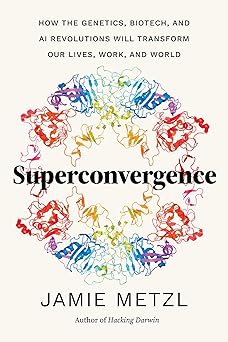
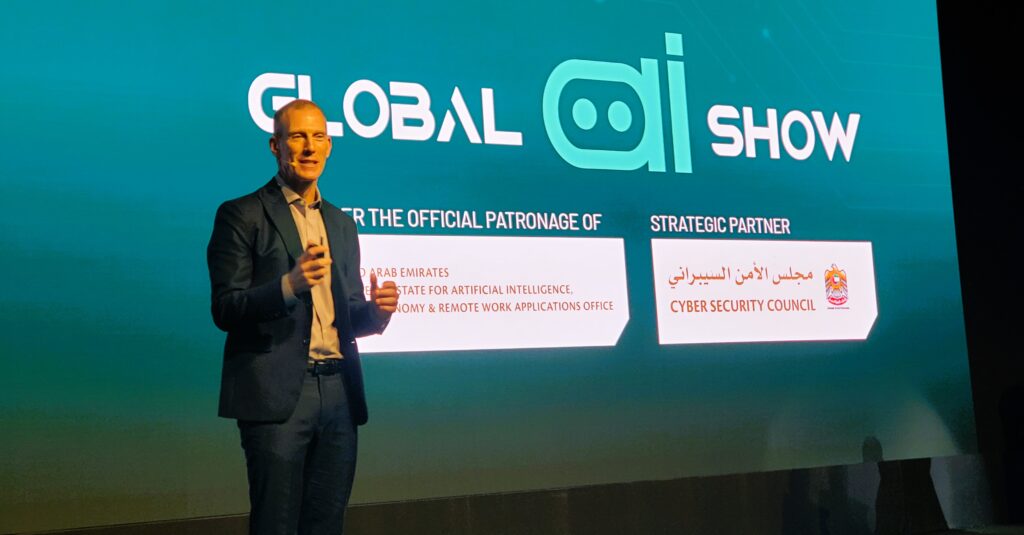
Jamie shared key insights from his new book, Superconvergence: How the Genetics, Biotech, and AI Revolutions Will Transform our Lives, Work, and World.
1. The world is on the brink of radical change driven by human-engineered intelligence and life.
Radical change driven by human-engineered intelligence and life:
The book argues that we’re at a unique point in history where humans have gained “God-like powers” to engineer both intelligence (through AI) and life itself (through biotechnology). This represents a fundamental shift from natural evolution to human-directed evolution.
2. Technologies are converging and accelerating, with each embedded in others, leading to rapid innovation.
Convergence and acceleration of technologies:
The author emphasizes how different technologies are becoming increasingly interconnected. For example, AI is now being used to understand biological systems, which in turn inspires new computer designs. This interconnectedness is leading to an unprecedented acceleration in technological progress.
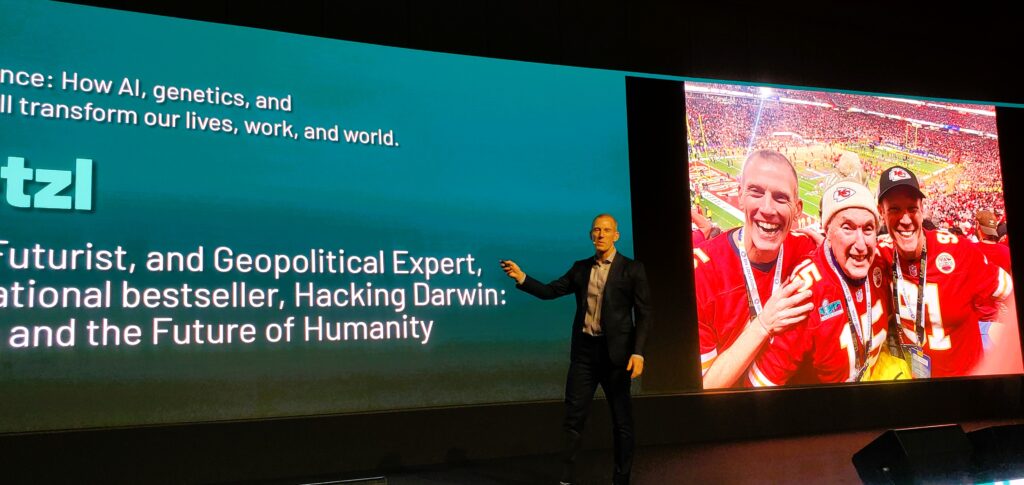
3. The book focuses on how these changes will impact key areas like healthcare, agriculture, and materials science.
Impact on key areas:
The book explores how these converging technologies will transform various sectors. It likely provides detailed examples and case studies in healthcare, agriculture, materials science, and possibly other fields to illustrate the scope of changes we can expect.
4. Healthcare is moving towards personalized, predictive, and preventive care based on individual molecular data.
Transformation of healthcare:
The author describes a shift from generalized healthcare to highly personalized treatments based on individual genetic and molecular data. This includes developments in pharmacogenomics and gene therapy, with the potential to cure previously intractable diseases.
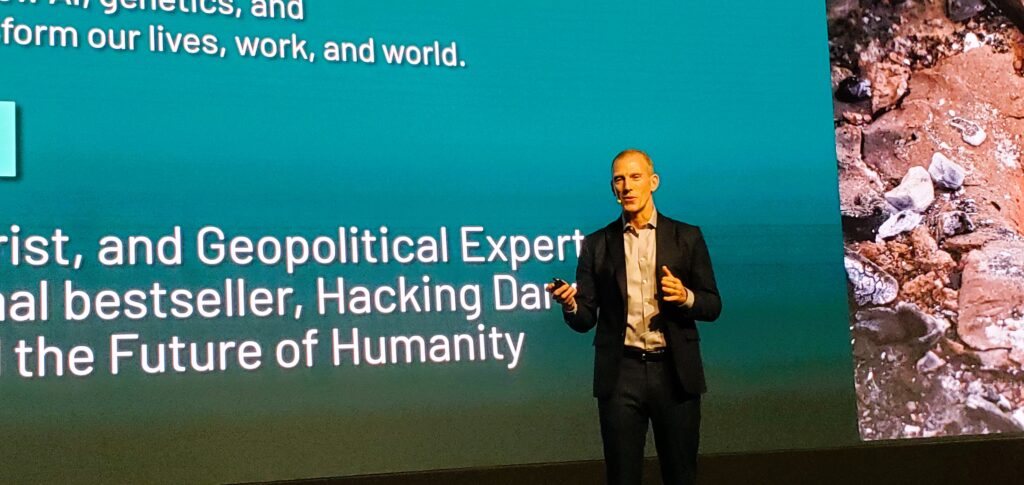
3. The book focuses on how these changes will impact key areas like healthcare, agriculture, and materials science.
Impact on key areas:
The book explores how these converging technologies will transform various sectors. It likely provides detailed examples and case studies in healthcare, agriculture, materials science, and possibly other fields to illustrate the scope of changes we can expect.
4. Healthcare is moving towards personalized, predictive, and preventive care based on individual molecular data.
Transformation of healthcare:
The author describes a shift from generalized healthcare to highly personalized treatments based on individual genetic and molecular data. This includes developments in pharmacogenomics and gene therapy, with the potential to cure previously intractable diseases.
5. Agriculture will need to increase productivity using advanced biotechnology to feed a growing population sustainably.
Evolution of agriculture: The book discusses how advanced biotechnology will be crucial in increasing agricultural productivity to feed a growing global population without expanding farmland. It addresses concerns about GMOs and frames all agriculture as a form of biotechnology.
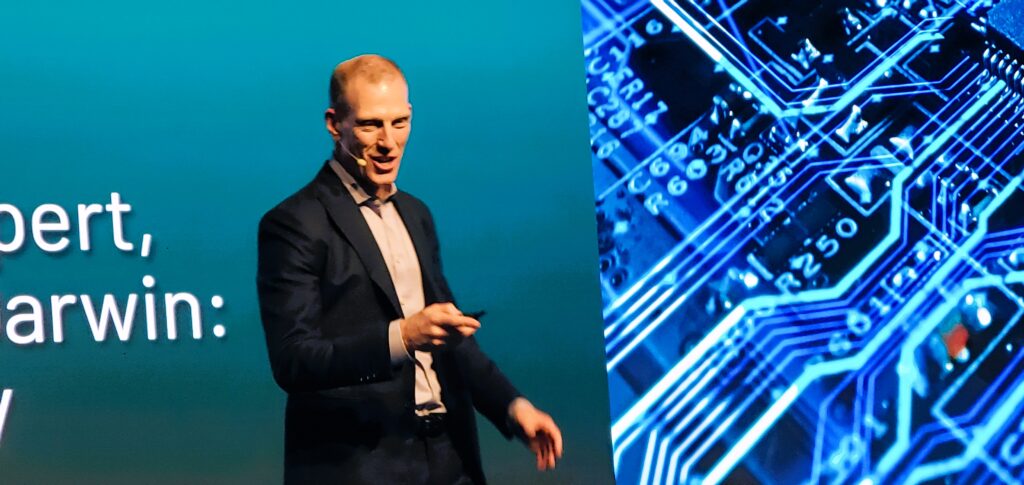
6. The book explores potential benefits of these changes, such as longer, healthier lives and sustainable futures.
Potential benefits:
The author presents an optimistic view of how these technologies could lead to longer, healthier lives and create a more sustainable future. The book likely provides specific examples of how these benefits might manifest.
7. It also warns of potential harms, citing examples like the CRISPR babies incident and COVID-19 origins.
Potential harms and risks:
While optimistic, the book also warns of potential dangers. It cites real-world examples like the controversial creation of CRISPR-edited babies and discusses the author’s views on the origins of COVID-19 as possibly linked to a lab accident.
8. The author proposes a framework for guiding technology development, emphasizing the importance of values.
Framework for guiding technology:
The author proposes a “pyramid of efforts” to guide technological development, emphasizing the importance of values in shaping how we use these powerful new tools. This framework likely includes recommendations at various levels, from individual actions to global policies.
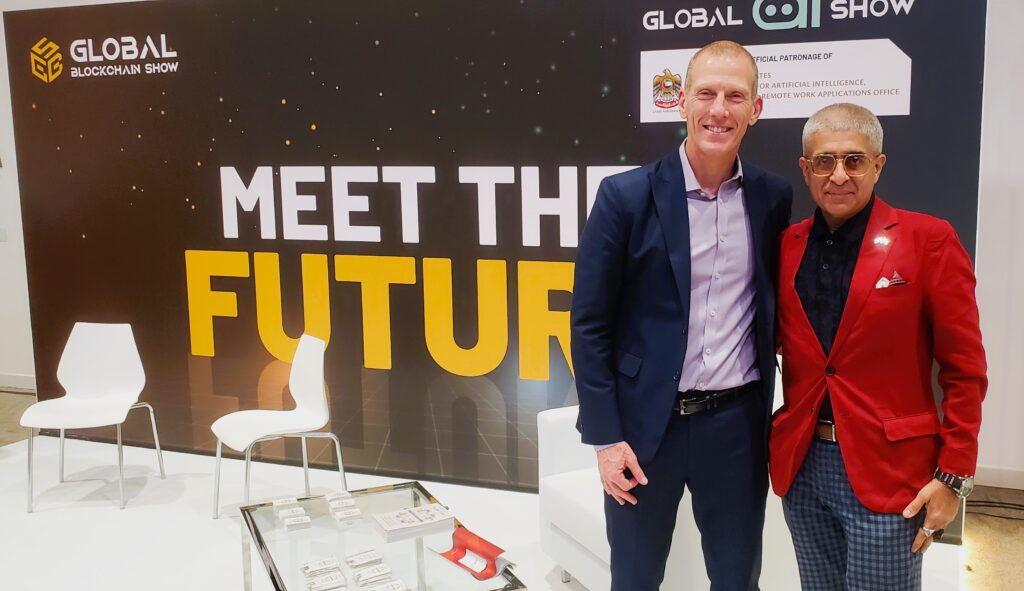
9. The book discusses the need for global governance to address common challenges posed by these technologies.
Need for global governance:
The book argues that many challenges posed by these technologies are global in nature and require new forms of international cooperation and governance. It mentions the author’s involvement with OneShared.World, an initiative aimed at addressing global challenges.
10. It encourages readers to actively participate in shaping the future by learning continuously, reprioritizing tasks, and focusing on core values.
Call for active participation:
The author encourages readers to engage with these issues actively. The book provides specific recommendations, including dedicating time to learning about emerging technologies, reassessing job tasks in light of AI advancements, and critically examining personal and societal values.
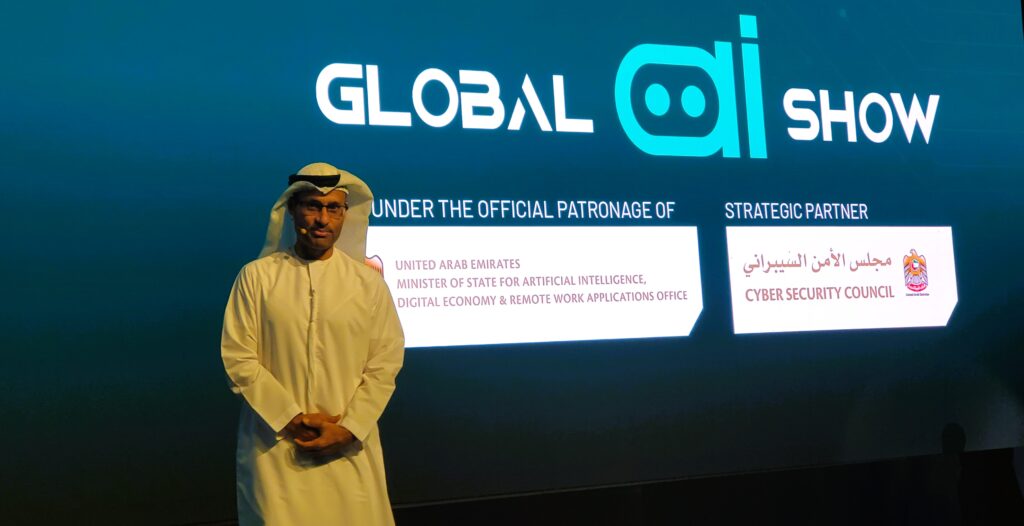
Another notable speaker at the Global AI Show is H.E. Dr. Mohamed Al Kuwaiti, Head of Cyber Security of the United Arab Emirates Government, delivered the keynote on the future of AI.
The main takeaway is that the United Arab Emirates (UAE) has big ambitions in the field of artificial intelligence (AI). The UAE aims to be a global leader in AI and is investing heavily in the technology. The country is also home to a number of AI startups and has a growing pool of AI talent.
The Middle East’s rapid digital transformation has made it a prime target for cyberattacks, exacerbated by geopolitical tensions. Effectively addressing these challenges demands a collaborative approach involving governments, businesses, academia, and individuals. Responsible technology use is crucial in mitigating risks, while public education is essential for building a secure digital environment. Platforms like GISEC serve as valuable forums for stakeholders to discuss cybersecurity solutions and foster collaboration. UAE is serious about becoming a leader in AI. The UAE has the resources, the talent, and the ambition to achieve this goal. The UAE is actively working to establish itself as a global leader in cybersecurity.
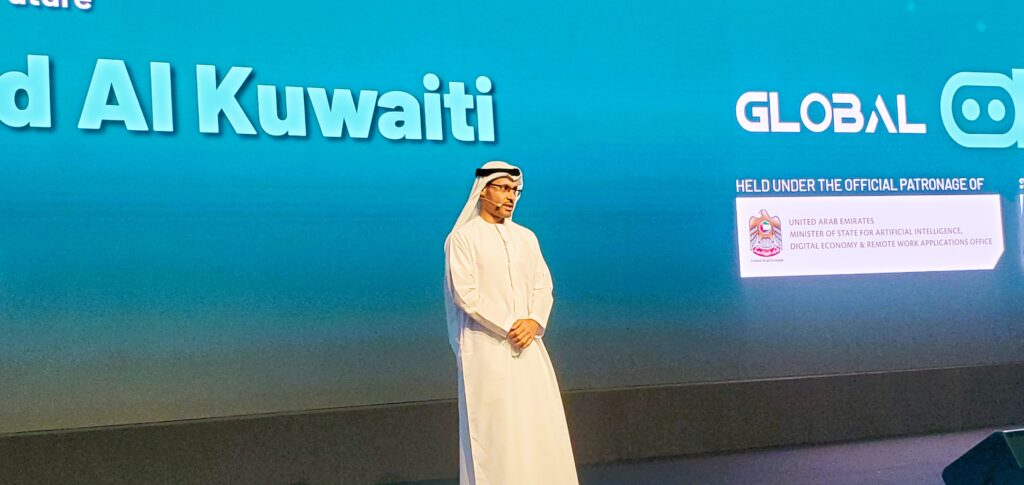
The UAE is dedicated to becoming a cybersecurity leader. The country is investing substantial resources in developing robust cybersecurity infrastructure, educating its population, and raising awareness about cyber threats. Additionally, it’s actively raising public awareness about cyber threats. Dr. Mohamed Al-Kuwaiti emphasizes the UAE’s pursuit of resilient and mission-focused security, incorporating emerging technologies like AI to fortify data protection. Collaboration among government, private sector, and academia is central to building a strong cybersecurity ecosystem, with organizations like Intersect playing a key role in fostering innovation and networking.
Dr. Mohamed Al-Kuwaiti highlights the UAE’s goal of achieving resilient and mission-focused security. This involves leveraging advanced technologies like artificial intelligence to strengthen data protection. Furthermore, Dr. Al-Kuwaiti emphasizes the importance of collaboration between the government, private sector, and academia in creating a comprehensive cybersecurity ecosystem.
By fostering a collaborative environment and prioritizing cybersecurity initiatives, the UAE aims to safeguard its critical infrastructure and protect its digital assets.

Dr. Divya Chander, a neuroscientist and medical futurist, took us on a journey from brain reading to brain writing to closed-loop brain-machine interface systems as the Global AI Show’s headliner.
While addressing at the event, Dr. Divya Chander, MD, PhD, Neuroscientist, Physician, Medical Futurist said, “Elon Musk is not the first person to find neuronlike, he is just the famous one”.
Neuroscience is at the forefront of brain decoding, allowing researchers to see into brains and hijack its circuitry like never before. Divya is at the vanguard of investigating how ancient and modern technology may read visions and dreams, manipulate thinking, and implant false memories. Her expertise is on how current medicine and science enable the restoration and enhancement of function in paralyzed persons, paving the way for digital and robotic control via human mind. Divya takes us on a tour through brain reading, brain writing, and closed-loop brain machine interface systems.
She is developing gadgets that read and write to the brain (brain mapping, neuromodulation) and connect to brain-machine interfaces for diagnostic and therapeutic applications. Her research also includes studies of human lifespan. The brain and intellect must be preserved in order for humans to live longer lives. Divya’s research involves the study of brain-machine interfaces, cryonics, human enhancement and its impact on consciousness and human evolution, and the ability to detect awareness in non-human beings. She has also been analyzing the impact of AI and embodied AI on consciousness, outlining the risk landscape and risk mitigation measures.
Dr. Chander’s study sheds light on the intricacies of the human mind and the consequences of technology advances in neuroscience. She began studying brain networks that support alterations in awareness around a decade ago. Dr. Chander uses cutting-edge technologies, such as optogenetics and EEG electrodes, to precisely investigate brain activity during the shift from aware to unconscious. This technique has offered insights into building algorithms to identify changes in awareness in order to prevent brain failure and lower the likelihood of illnesses like dementia.
“I’ve been involved with mapping consciousness for almost a decade now, focusing on the neural networks that lead to consciousness-state switches,” Dr Chander said.
Dr. Chander conducts her studies using cloud technologies and the Internet of Medical Things (IoMT). Despite the promise of IoMT devices, she recognizes barriers to wider adoption, particularly in risk-averse organizations like hospitals.
However, she points out that wearable devices are becoming more popular, blurring the distinction between passive IoT gadgets and active medical monitoring.
“Some of these things might just be passive IoT devices, and sometimes they are being used to collect medical data,” she said.
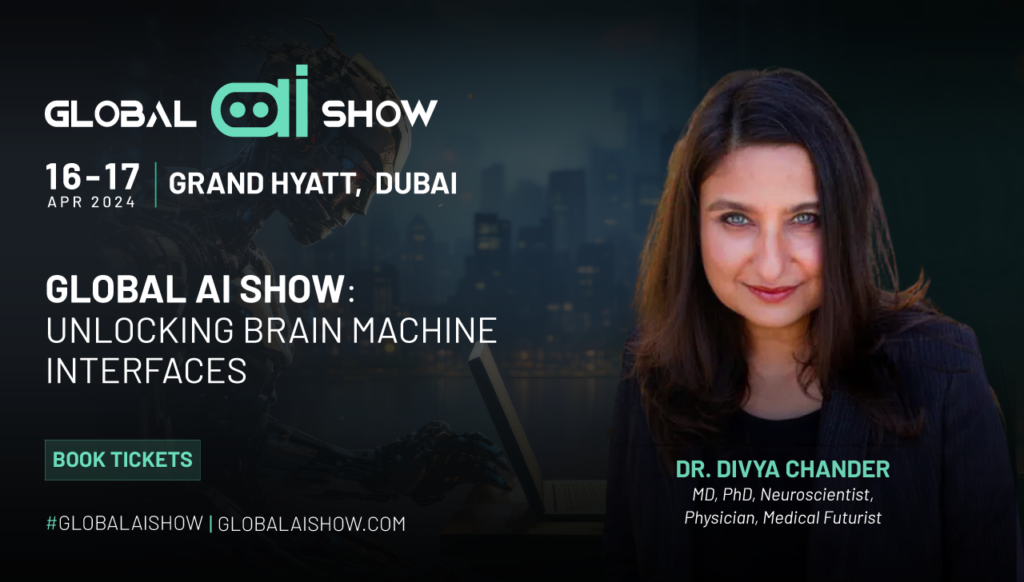
Even gadgets that use Alexa, Amazon’s virtual assistant technology, may capture your speech and passively diagnose you biometrically, she claims.
Dr. Chander’s study has benefited greatly from advances in computer power, which have enabled the application of complicated algorithms. Such innovation improves data security and allows for real-time monitoring and analysis, which is critical for maintaining brain health.
“Advancements in bioelectronics and computing power are enabling us to deploy algorithms that might otherwise have been a little bit more complicated to deploy,” she said.
Dr Chander discussed the transformational influence of artificial intelligence in neuroscience, highlighting its role in deciphering brain signals with unparalleled accuracy.
“AI has revolutionised brain reading by advancing attentional or transformer models, which ultimately gave rise to large language models.”
This technology allows researchers to read and interpret signals in the brain with far more fidelity, as well as establish connections in the brain both invasively and non-invasively.
For example, Dr. Chander explains that the technology can interpret what someone sees, decode it, and extract semantic meaning all at the same time, which was previously inconceivable.
Ethical Considerations
- Privacy concerns: The ability to read brain activity raises questions about data privacy and potential misuse.
- Neurocapitalism: The commercialization of brain data could lead to new forms of exploitation.
- Need for regulation: Protecting individuals’ neural rights is crucial to prevent harmful applications of brain decoding technology.
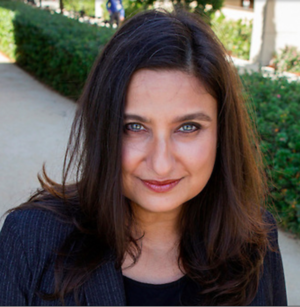
Future Outlook
- Rapid advancements: The field of brain decoding is rapidly evolving, with potential for significant breakthroughs in the next decade.
- Therapeutic applications: Brain decoding could revolutionize the treatment of neurological and psychiatric disorders.
- Ethical challenges: Addressing the ethical implications of brain decoding will be essential for responsible development and use of this technology.
Dr. Chander established Lucidify, a startup that records changes in awareness levels, as a result of her research.
She works on novel breakthroughs that minimize the need for electrodes, increasing user comfort and compliance.
“That’s important because the more comfortable something is for a human to wear, the more likely they are to utilise that wearable,” she said.
Lucidify’s aim is to create revolutionary products that promote and safeguard brain health.
“Our goal is to transform brainwave data into vital signs, revolutionising neurological monitoring and intervention to enhance the quality of life,” Dr Chander said.
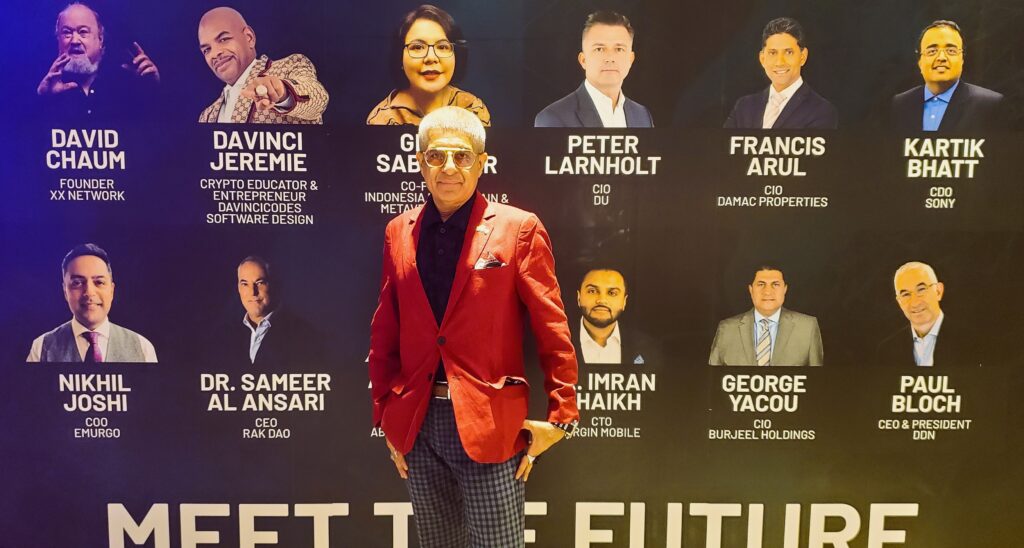
In addition to the extensive conference schedule, the festivities included a dynamic start-up village where aspiring entrepreneurs could demonstrate their creative ideas to potential investors and venture capitalists. The VAP Accelerator launch emphasized the company’s commitment to developing the next generation of AI and blockchain pioneers.
